- Home
- J. R. R. Tolkien
Tree and Leaf Page 5
Tree and Leaf Read online
Page 5
Fantasy, of course, starts out with an advantage: arresting strangeness. But that advantage has been turned against it, and has contributed to its disrepute. Many people dislike being ‘arrested’. They dislike any meddling with the Primary World, or such small glimpses of it as are familiar to them. They, therefore, stupidly and even maliciously confound Fantasy with Dreaming, in which there is no Art;32 and with mental disorders, in which there is not even control: with delusion and hallucination.
But the error or malice, engendered by disquiet and consequent dislike, is not the only cause of this confusion. Fantasy has also an essential drawback: it is difficult to achieve. Fantasy may be, as I think, not less but more sub-creative; but at any rate it is found in practice that ‘the inner consistency of reality’ is more difficult to produce, the more unlike are the images and the rearrangements of primary material to the actual arrangements of the Primary World. It is easier to produce this kind of ‘reality’ with more ‘sober’ material. Fantasy thus, too often, remains undeveloped; it is and has been used frivolously, or only half-seriously, or merely for decoration: it remains merely ‘fanciful’. Anyone inheriting the fantastic device of human language can say the green sun. Many can then imagine or picture it. But that is not enough – though it may already be a more potent thing than many a ‘thumbnail sketch’ or ‘transcript of life’ that receives literary praise.
To make a Secondary World inside which the green sun will be credible, commanding Secondary Belief, will probably require labour and thought, and will certainly demand a special skill, a kind of elvish craft. Few attempt such difficult tasks. But when they are attempted and in any degree accomplished then we have a rare achievement of Art: indeed narrative art, story-making in its primary and most potent mode.
In human art Fantasy is a thing best left to words, to true literature. In painting, for instance, the visible presentation of the fantastic image is technically too easy; the hand tends to outrun the mind, even to overthrow it.33 Silliness or morbidity are frequent results. It is a misfortune that Drama, an art fundamentally distinct from Literature, should so commonly be considered together with it, or as a branch of it. Among these misfortunes we may reckon the depreciation of Fantasy. For in part at least this depreciation is due to the natural desire of critics to cry up the forms of literature or ‘imagination’ that they themselves, innately or by training, prefer. And criticism in a country that has produced so great a Drama, and possesses the works of William Shakespeare, tends to be far too dramatic. But Drama is naturally hostile to Fantasy. Fantasy, even of the simplest kind, hardly ever succeeds in Drama, when that is presented as it should be, visibly and audibly acted. Fantastic forms are not to be counterfeited. Men dressed up as talking animals may achieve buffoonery or mimicry, but they do not achieve Fantasy. This is, I think, well illustrated by the failure of the bastard form, pantomime. The nearer it is to ‘dramatised fairy-story’ the worse it is. It is only tolerable when the plot and its fantasy are reduced to a mere vestigiary framework for farce, and no ‘belief’ of any kind in any part of the performance is required or expected of anybody. This is, of course, partly due to the fact that the producers of drama have to, or try to, work with mechanism to represent either Fantasy or Magic. I once saw a so-called ‘children’s pantomime’, the straight story of Puss-in-Boots, with even the metamorphosis of the ogre into a mouse. Had this been mechanically successful it would either have terrified the spectators or else have been just a turn of high-class conjuring. As it was, though done with some ingenuity of lighting, disbelief had not so much to be suspended as hung, drawn, and quartered.
In Macbeth, when it is read, I find the witches tolerable: they have a narrative function and some hint of dark significance; though they are vulgarised, poor things of their kind. They are almost intolerable in the play. They would be quite intolerable, if I were not fortified by some memory of them as they are in the story as read. I am told that I should feel differently if I had the mind of the period, with its witch-hunts and witch-trials. But that is to say: if I regarded the witches as possible, indeed likely, in the Primary World; in other words, if they ceased to be ‘Fantasy’. That argument concedes the point. To be dissolved, or to be degraded, is the likely fate of Fantasy when a dramatist tries to use it, even such a dramatist as Shakespeare. Macbeth is indeed a work by a playwright who ought, at least on this occasion, to have written a story, if he had the skill or patience for that art.
A reason, more important, I think, than the inadequacy of stage-effects, is this: Drama has, of its very nature, already attempted a kind of bogus, or shall I say at least substitute, magic: the visible and audible presentation of imaginary men in a story. That is in itself an attempt to counterfeit the magician’s wand. To introduce, even with mechanical success, into this quasi-magical secondary world a further fantasy or magic is to demand, as it were, an inner or tertiary world. It is a world too much. To make such a thing may not be impossible. I have never seen it done with success. But at least it cannot be claimed as the proper mode of drama, in which walking and talking people have been found to be the natural instruments of Art and illusion.34
For this precise reason – that the characters, and even the scenes, are in Drama not imagined but actually beheld – Drama is, even though it uses a similar material (words, verse, plot), an art fundamentally different from narrative art. Thus, if you prefer Drama to Literature (as many literary critics plainly do), or form your critical theories primarily from dramatic critics, or even from Drama, you are apt to misunderstand pure story-making, and to constrain it to the limitations of stage-plays. You are, for instance, likely to prefer characters, even the basest and dullest, to things. Very little about trees as trees can be got into a play.
Now ‘Faërian Drama’ – those plays which according to abundant records the elves have often presented to men – can produce Fantasy with a realism and immediacy beyond the compass of any human mechanism. As a result their usual effect (upon a man) is to go beyond Secondary Belief. If you are present at a Faërian drama you yourself are, or think that you are, bodily inside its Secondary World. The experience may be very similar to Dreaming and has (it would seem) sometimes (by men) been confounded with it. But in Faërian drama you are in a dream that some other mind is weaving, and the knowledge of that alarming fact may slip from your grasp. To experience directly a Secondary World: the potion is too strong, and you give to it Primary Belief, however marvellous the events. You are deluded – whether that is the intention of the elves (always or at any time) is another question. They at any rate are not themselves deluded. This is for them a form of Art, and distinct from Wizardry or Magic, properly so called. They do not live in it, though they can, perhaps, afford to spend more time at it than human artists can. The Primary World, Reality, of elves and men is the same, if differently valued and perceived.
We need a word for this elvish craft, but all the words that have been applied to it have been blurred and confused with other things. Magic is ready to hand, and I have used it above (see here), but I should not have done so: Magic should be reserved for the operations of the Magician. Art is the human process that produces by the way (it is not its only or ultimate object) Secondary Belief. Art of the same sort, if more skilled and effortless, the elves can also use, or so the reports seem to show; but the more potent and specially elvish craft I will, for lack of a less debatable word, call Enchantment. Enchantment produces a Secondary World into which both designer and spectator can enter, to the satisfaction of their senses while they are inside; but in its purity it is artistic in desire and purpose. Magic produces, or pretends to produce, an alteration in the Primary World. It does not matter by whom it is said to be practised, fay or mortal, it remains distinct from the other two; it is not an art but a technique; its desire is power in this world, domination of things and wills.
To the elvish craft, Enchantment, Fantasy aspires, and when it is successful of all forms of human art most nearly approaches. At the
heart of many man-made stories of the elves lies, open or concealed, pure or alloyed, the desire for a living, realised sub-creative art, which (however much it may outwardly resemble it) is inwardly wholly different from the greed for self-centred power which is the mark of the mere Magician. Of this desire the elves, in their better (but still perilous) part, are largely made; and it is from them that we may learn what is the central desire and aspiration of human Fantasy – even if the elves are, all the more in so far as they are, only a product of Fantasy itself. That creative desire is only cheated by counterfeits, whether the innocent but clumsy devices of the human dramatist, or the malevolent frauds of the magicians. In this world it is for men unsatisfiable, and so imperishable. Uncorrupted it does not seek delusion, nor bewitchment and domination; it seeks shared enrichment, partners in making and delight, not slaves.
To many, Fantasy, this sub-creative art which plays strange tricks with the world and all that is in it, combining nouns and redistributing adjectives, has seemed suspect, if not illegitimate. To some it has seemed at least a childish folly, a thing only for peoples or for persons in their youth. As for its legitimacy I will say no more than to quote a brief passage from a letter I once wrote to a man who described myth and fairy-story as ‘lies’; though to do him justice he was kind enough and confused enough to call fairy-story making ‘Breathing a lie through Silver’.
‘Dear Sir,’ I said – ‘Although now long estranged,
Man is not wholly lost nor wholly changed.
Dis-graced he may be, yet is not de-throned,
and keep the rags of lordship once he owned:
Man, Sub-creator, the refracted Light
through whom is splintered from a single White
to many hues, and endlessly combined
in living shapes that move from mind to mind.
Though all the crannies of the world we filled
with Elves and Goblins, though we dared to build
Gods and their houses out of dark and light,
and sowed the seed of dragons – ’twas our right
(used or misused). That right has not decayed:
we make still by the law in which we’re made.’
Fantasy is a natural human activity. It certainly does not destroy or even insult Reason; and it does not either blunt the appetite for, nor obscure the perception of, scientific verity. On the contrary. The keener and the clearer is the reason, the better fantasy will it make. If men were ever in a state in which they did not want to know or could not perceive truth (facts or evidence), then Fantasy would languish until they were cured. If they ever get into that state (it would not seem at all impossible), Fantasy will perish, and become Morbid Delusion.
For creative Fantasy is founded upon the hard recognition that things are so in the world as it appears under the sun; on a recognition of fact, but not a slavery to it. So upon logic was founded the nonsense that displays itself in the tales and rhymes of Lewis Carroll. If men really could not distinguish between frogs and men, fairy-stories about frog-kings would not have arisen.
Fantasy can, of course, be carried to excess. It can be ill done. It can be put to evil uses. It may even delude the minds out of which it came. But of what human thing in this fallen world is that not true? Men have conceived not only of elves, but they have imagined gods, and worshipped them, even worshipped those most deformed by their authors’ own evil. But they have made false gods out of other materials: their nations, their banners, their monies; even their sciences and their social and economic theories have demanded human sacrifice. Abusus non tollit usum. Fantasy remains a human right: we make in our measure and in our derivative mode, because we are made: and not only made, but made in the image and likeness of a Maker.
RECOVERY, ESCAPE, CONSOLATION
As for old age, whether personal or belonging to the times in which we live, it may be true, as is often supposed, that this imposes disabilities (cf. see here). But it is in the main an idea produced by the mere study of fairy-stories. The analytic study of fairy-stories is as bad a preparation for the enjoying or the writing of them as would be the historical study of the drama of all lands and times for the enjoyment or writing of stage-plays. The study may indeed become depressing. It is easy for the student to feel that with all his labour he is collecting only a few leaves, many of them now torn or decayed, from the countless foliage of the Tree of Tales, with which the Forest of Days is carpeted. It seems vain to add to the litter. Who can design a new leaf? The patterns from bud to unfolding, and the colours from spring to autumn were all discovered by men long ago. But that is not true. The seed of the tree can be replanted in almost any soil, even in one so smoke-ridden (as Lang said) as that of England. Spring is, of course, not really less beautiful because we have seen or heard of other like events: like events, never from world’s beginning to world’s end the same event. Each leaf, of oak and ash and thorn, is a unique embodiment of the pattern, and for some eye this very year may be the embodiment, the first ever seen and recognized, though oaks have put forth leaves for countless generations of men.
We do not, or need not, despair of drawing because all lines must be either curved or straight, nor of painting because there are only three ‘primary’ colours. We may indeed be older now, in so far as we are heirs in enjoyment or in practice of many generations of ancestors in the arts. In this inheritance of wealth there may be a danger of boredom or of anxiety to be original, and that may lead to a distaste for fine drawing, delicate pattern, and ‘pretty’ colours, or else to mere manipulation and over-elaboration of old material, clever and heartless. But the true road of escape from such weariness is not to be found in the wilfully awkward, clumsy, or misshapen, not in making all things dark or unremittingly violent; nor in the mixing of colours on through subtlety to drabness, and the fantastical complication of shapes to the point of silliness and on towards delirium. Before we reach such states we need recovery. We should look at green again, and be startled anew (but not blinded) by blue and yellow and red. We should meet the centaur and the dragon, and then perhaps suddenly behold, like the ancient shepherds, sheep, and dogs, and horses – and wolves. This recovery fairy-stories help us to make. In that sense only a taste for them may make us, or keep us, childish.
Recovery (which includes return and renewal of health) is a re-gaining – regaining of a clear view. I do not say ‘seeing things as they are’ and involve myself with the philosophers, though I might venture to say ‘seeing things as we are (or were) meant to see them’ – as things apart from ourselves. We need, in any case, to clean our windows; so that the things seen clearly may be freed from the drab blur of triteness or familiarity – from possessiveness. Of all faces those of our familiares are the ones both most difficult to play fantastic tricks with, and most difficult really to see with fresh attention, perceiving their likeness and unlikeness: that they are faces, and yet unique faces. This triteness is really the penalty of ‘appropriation’: the things that are trite, or (in a bad sense) familiar, are the things that we have appropriated, legally or mentally. We say we know them. They have become like the things which once attracted us by their glitter, or their colour, or their shape, and we laid hands on them, and then locked them in our hoard, acquired them, and acquiring ceased to look at them.
Of course, fairy-stories are not the only means of recovery, or prophylactic against loss. Humility is enough. And there is (especially for the humble) Mooreeffoc, or Chestertonian Fantasy. Mooreeffoc is a fantastic word, but it could be seen written up in every town in this land. It is Coffee-room, viewed from the inside through a glass door, as it was seen by Dickens on a dark London day; and it was used by Chesterton to denote the queerness of things that have become trite, when they are seen suddenly from a new angle. That kind of ‘fantasy’ most people would allow to be wholesome enough; and it can never lack for material. But it has, I think, only a limited power; for the reason that recovery of freshness of vision is its only virtue. The word Mooreeffoc may
cause you suddenly to realise that England is an utterly alien land, lost either in some remote past age glimpsed by history, or in some strange dim future to be reached only by a time-machine; to see the amazing oddity and interest of its inhabitants and their customs and feeding-habits; but it cannot do more than that: act as a time-telescope focused on one spot. Creative fantasy, because it is mainly trying to do something else (make something new), may open your hoard and let all the locked things fly away like cage-birds. The gems all turn into flowers or flames, and you will be warned that all you had (or knew) was dangerous and potent, not really effectively chained, free and wild; no more yours than they were you.
The ‘fantastic’ elements in verse and prose of other kinds, even when only decorative or occasional, help in this release. But not so thoroughly as a fairy-story, a thing built on or about Fantasy, of which Fantasy is the core. Fantasy is made out of the Primary World, but a good craftsman loves his material, and has a knowledge and feeling for clay, stone and wood which only the art of making can give. By the forging of Gram cold iron was revealed; by the making of Pegasus horses were ennobled; in the Trees of the Sun and Moon root and stock, flower and fruit are manifested in glory.
And actually fairy-stories deal largely, or (the better ones) mainly, with simple or fundamental things, untouched by Fantasy, but these simplicities are made all the more luminous by their setting. For the story-maker who allows himself to be ‘free with’ Nature can be her lover not her slave. It was in fairy-stories that I first divined the potency of the words, and the wonder of the things, such as stone, and wood, and iron; tree and grass; house and fire; bread and wine.

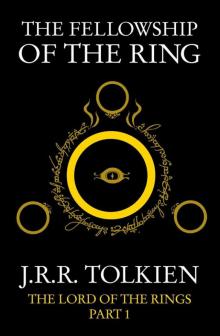 The Fellowship of the Ring
The Fellowship of the Ring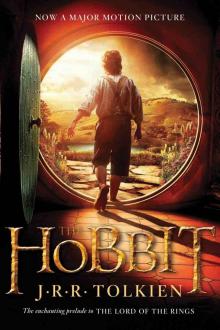 The Hobbit
The Hobbit The Two Towers
The Two Towers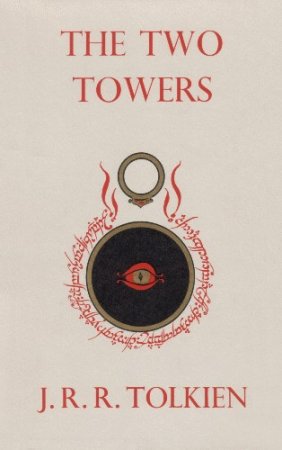 The Return of the King
The Return of the King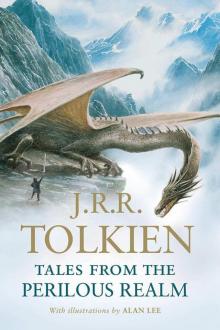 Tales From the Perilous Realm
Tales From the Perilous Realm Leaf by Niggle
Leaf by Niggle The Silmarillon
The Silmarillon The Book of Lost Tales, Part Two
The Book of Lost Tales, Part Two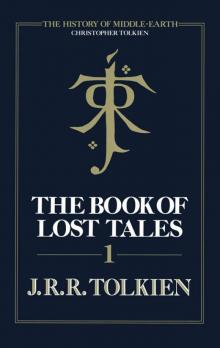 The Book of Lost Tales, Part One
The Book of Lost Tales, Part One The Book of Lost Tales 2
The Book of Lost Tales 2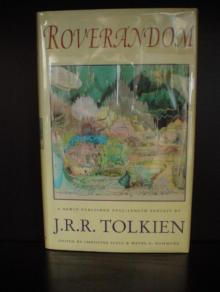 Roverandom
Roverandom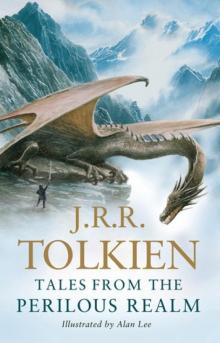 Smith of Wootton Major
Smith of Wootton Major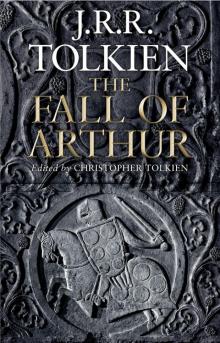 The Fall of Arthur
The Fall of Arthur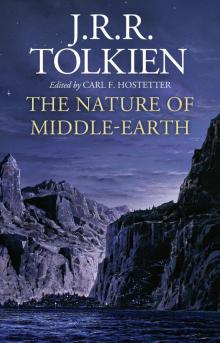 The Nature of Middle-earth
The Nature of Middle-earth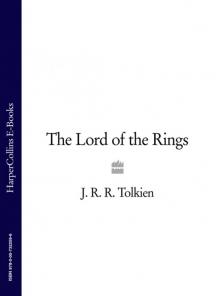 The Lord of the Rings: The Fellowship of the Ring, The Two Towers, The Return of the King
The Lord of the Rings: The Fellowship of the Ring, The Two Towers, The Return of the King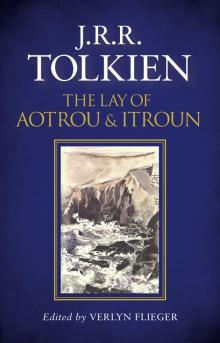 The Lay of Aotrou and Itroun
The Lay of Aotrou and Itroun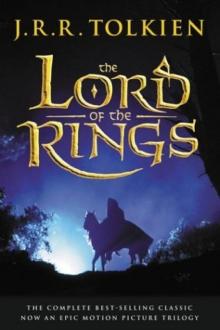 lord_rings.qxd
lord_rings.qxd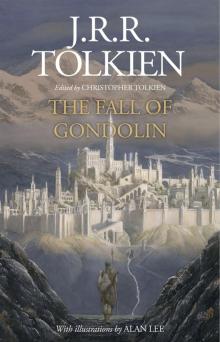 The Fall of Gondolin
The Fall of Gondolin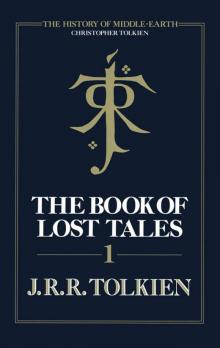 The Book of Lost Tales, Part 1
The Book of Lost Tales, Part 1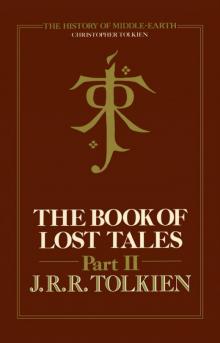 The Book of Lost Tales, Part 2
The Book of Lost Tales, Part 2 The Lord of the Rings
The Lord of the Rings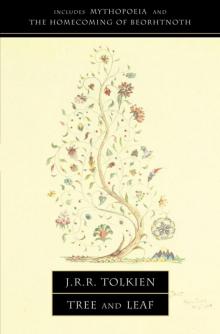 Tree and Leaf
Tree and Leaf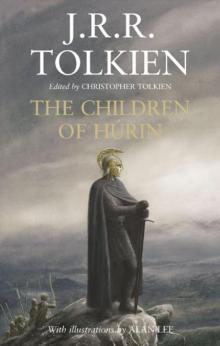 The Children of Húrin
The Children of Húrin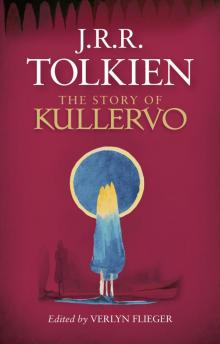 The Story of Kullervo
The Story of Kullervo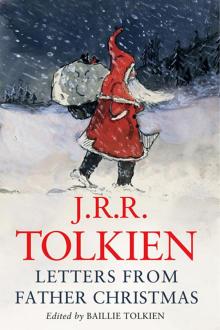 Letters From Father Christmas
Letters From Father Christmas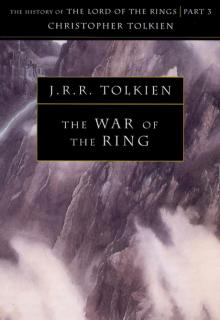 The History of Middle Earth: Volume 8 - The War of the Ring
The History of Middle Earth: Volume 8 - The War of the Ring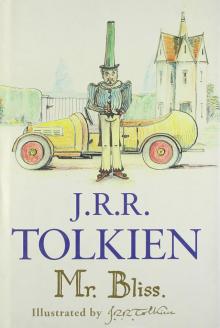 Mr. Bliss
Mr. Bliss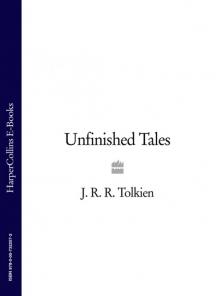 Unfinished Tales
Unfinished Tales The Adventures of Tom Bombadil
The Adventures of Tom Bombadil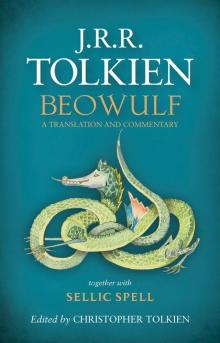 Beowulf: A Translation and Commentary, together with Sellic Spell
Beowulf: A Translation and Commentary, together with Sellic Spell The Silmarillion
The Silmarillion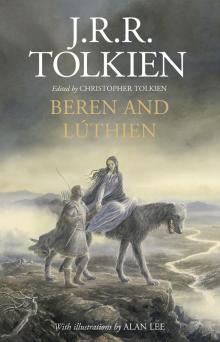 Beren and Lúthien
Beren and Lúthien